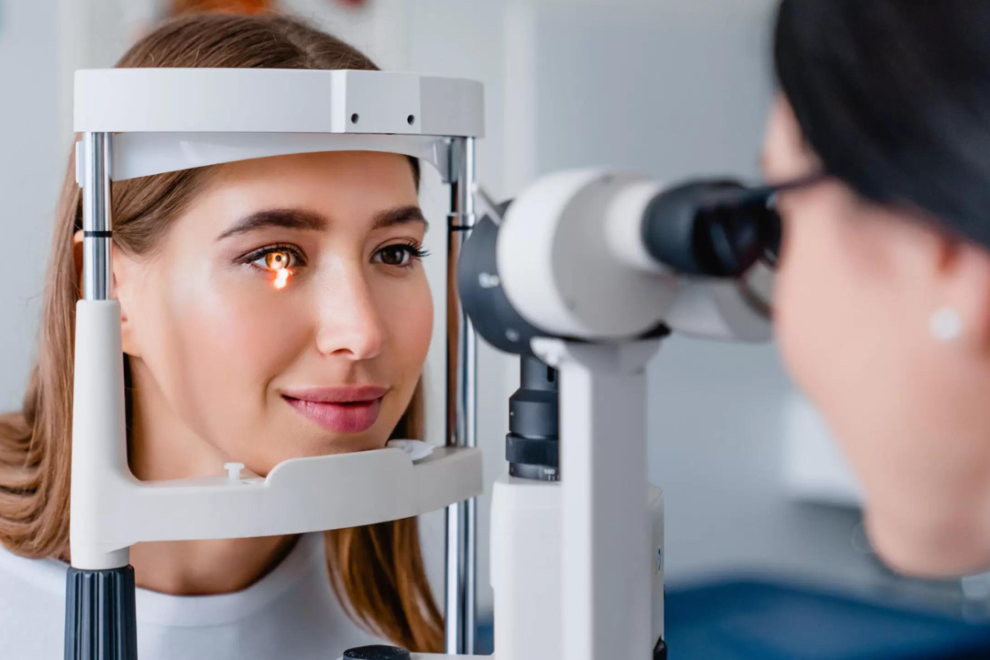Drug Eluting Coronary Stenting Treatment and Cost in India: Advanced Eye Care Solutions
Indian eye hospitals are equipped with the latest technologies and staffed by experienced ophthalmologists specializing in diabetic eye care


Free Doctor Opinion
Diabetes can affect the eyes in a number of ways. Frequent fluctuations in vision, cataract at a young age, decreased vision, temporary paralysis of the muscles controlling the movement of eyes and thus double vision are the various ways in which diabetes usually affect eye. The most significant complication of diabetes in eye is diabetic retinopathy and its complications. Contact WecareIndia.com for best DIABETIC RETINOPATHY SURGERY IN INDIA.
What is diabetic retinopathy?
Diabetic retinopathy is a condition in which high blood sugar causes retinal blood vessels to swell and leak blood.
What are the different types of Retinopathy?
- Non-proliferative – When blood vessels in the retina are damaged, they can leak fluid or bleed. This causes the retina to swell and form deposits called exudates. This is an early form of diabetic retinopathy and may not lead to any decrease in vision, but it can lead to other more serious forms of retinopathy that affect the vision. The fluid and exudates collects in the macula (the part of the retina that allows us to see fine details), thus decreasing the vision. Sometimes there may be a macular edema without any loss of vision.
- Proliferative diabetic retinopathy – This is an advanced stage of diabetic retinopathy, where the blood supply of retina is compromised. In response to this, new fragile blood vessels grow on the surface of the retina (neovascularization). These new vessels are very fragile and bleed easily. These may lead to serious vision problems if they bleed into the vitreous (the clear, jelly-like substance that fills the center of the eye) which is known as vitreous hemorrhage. This prevents the light from reaching the retina and thus can blur the vision.
The new blood vessels and the bleed into the vitreous can also cause scar tissue to develop, which can pull the retina away from the back of the eye. This is known as retinal detachment, and can lead to blindness if untreated.
In addition, abnormal blood vessels can grow on the iris (the colored part in the front of your eye, which can lead to glaucoma).
Who can be the candidate for diabetic retinopathy?
Some one with fluctuating blood sugar levels is at high risk same as one with long-term diabetes.
How can diabetic retinopathy be prevented?
Keeping your blood sugar at an even level can help prevent diabetic retinopathy. If you have high blood pressure, keeping that under control is helpful as well.
Even controlled diabetes can lead to diabetic retinopathy, so you should have your eyes examined once a year thus in case you have that, the treatment can begin as soon as possible.
What are the symptoms of diabetic retinopathy?
In the early stages of diabetic retinopathy, there might be no symptoms at all, or you might have blurred vision. In the later stages, you develop cloudy vision or blind spots. Therefore it is essential to have periodic evaluation of your eye by an ophthalmologist to detect the condition early. Early diagnosis and timely treatment is very essential in preventing the complications of this disease and thus maintaining vision.
How frequently should I get my eye examined?
If you are diabetic, you should get your eyes examined at least once a year. If you are suffering from diabetic retinopathy, your ophthalmologist will advise you if you need some investigations, treatment or just need to follow up.
What diabetic retinopathy treatments are currently available?
The best treatment is to keep your diabetes under control; blood pressure control is also helpful. Your doctor may decide on laser photocoagulation to seal leaking blood vessels and destroy new blood vessel growth. If blood gets into the vitreous humor, your doctor might want to perform a procedure called a vitrectomy
Read Also :-
- Cryopreservation Treatment in India: Affordable Fertility and Medical Solutions
- Chin and Cheek Augmentation in India: Enhance Your Facial Profile
- CSF Shunt Procedures in India: Effective Treatment for Hydrocephalus
- Cholecystectomy (Gall Bladder Removal) in India: Safe & Affordable Surgery
- Carotid Endarterectomy in India: Advanced Stroke Prevention Surgery
- Cholesterol Embolism Surgery in India: Expert Care for Vascular Health
Committed To Build Positive, Safe, Patient Focused Care.
High Quality
Care
Home Review
Medicine
All Advanced
Equipment
Book An Appointment

At We Care India, we offer complete medical services for your entire family, from routine check-ups to injury care, ensuring personalized attention and expert assistance for all your health needs.


